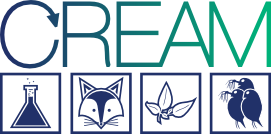Chemicals introduced in the environment are potential risks for ecosystems. These risks are estimated by ecological risk assessments. However, current risk assessments are mainly based on laboratory experiments measuring the effects of chemicals on individuals. The effects on populations or even ecosystems are difficult to assess due to spatial and time scales involved, as well as the number of factors that may interact with the effects of the chemical. Such complex systems are hard to address empirically and mechanistic effect models provide tools for such assessments.
Despite the potentials of mechanistic effect models for chemical risk assessments, they are rarely applied in regulation procedures in Europe. One reason is related to the lack of standardization and of rigorous model development, model testing and analysis, as well as documentation.
Research is necessary to establish models suitable specifically for chemical risk assessments, and to assure quality and traceability of modeling approaches.
The CREAM project addresses these challenges. In the individual projects, models are developed that will be thoroughly validated with data collected within and outside of the CREAM project. The models will be developed with ongoing feedback from regulators and experts from industry. For the documentations of the modeling projects, the recently introduced framework for transparent and comprehensive ecological modeling documentation (TRACE) will be applied.
Summary of workpackages and projects
The research comprised in CREAM is conducted by 23 individual projects which include modeling and experimental approaches to varying extents. The projects are grouped into workpackages according to organism groups investigated which comprise most of the organisms and ecosystems routinely used in current risk assessments. Workpackage 1 deals with aquatic invertebrates, including small crustaceans (e.g., Daphnia & Gammarus) as well as the dipteran Chironomus and the mollusc Lymnaea. Soil organisms like collembolans are the focus of workpackage 2. In workpackage 3, the projects investigate effects of chemicals on vertebrates, including rodents, bats, birds, polar bears, and fish.
The research topics range from toxicokinetics in individuals to the influence of competition or landscape characteristics on the effects of chemicals. A central theme of the projects is the influence of life history on population recovery and growth, especially including sublethal effects of chemicals.
Model approaches used include organism-level toxicokinetic and dynamic energy budget (DEB) models. These models can be included in population models. Several projects use individual-based models (IBM) where individuals interact with each other and the environment. IBMs are used for the exploration of population-level effects of chemicals under consideration of additional factors, e.g., phenotypic plasticity, dispersal or movement patterns, landscape characteristics, agricultural practices, and exposure patterns to chemicals. Matrix models explicitly include varying effects on different life stages of the organism of concern.
The TRACE documentation framework will be used by the modeling projects within CREAM. Thus, the models will not be presented as black boxes, but will be open for scrutiny by all parties involved. Additionally, the modeling projects within CREAM will work as a test bed for the TRACE documentation framework, and will help introducing TRACE as common standard. In addition to the documentation framework, a good modeling practice (GMP) will be developed by CREAM. GMP for models applied to chemical risk assessment will provide guidelines about actual modeling and testing methods to be used. The overarching aim to produce guidelines for a GMP are represented by workpackage 4 in CREAM, and supported by a project investigating the perception and expectations by decision-makers in chemical risk assessment. Empirical data sets for the validation of the models developed in CREAM will be collected from within and outside the CREAM project, and provided through workpackage 5.

